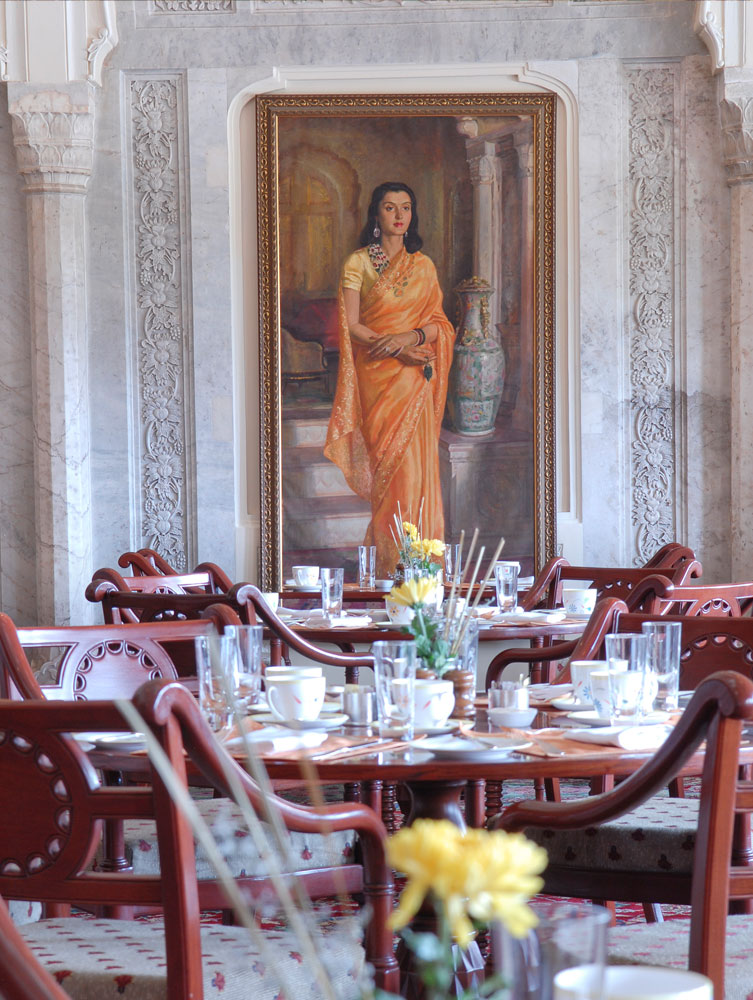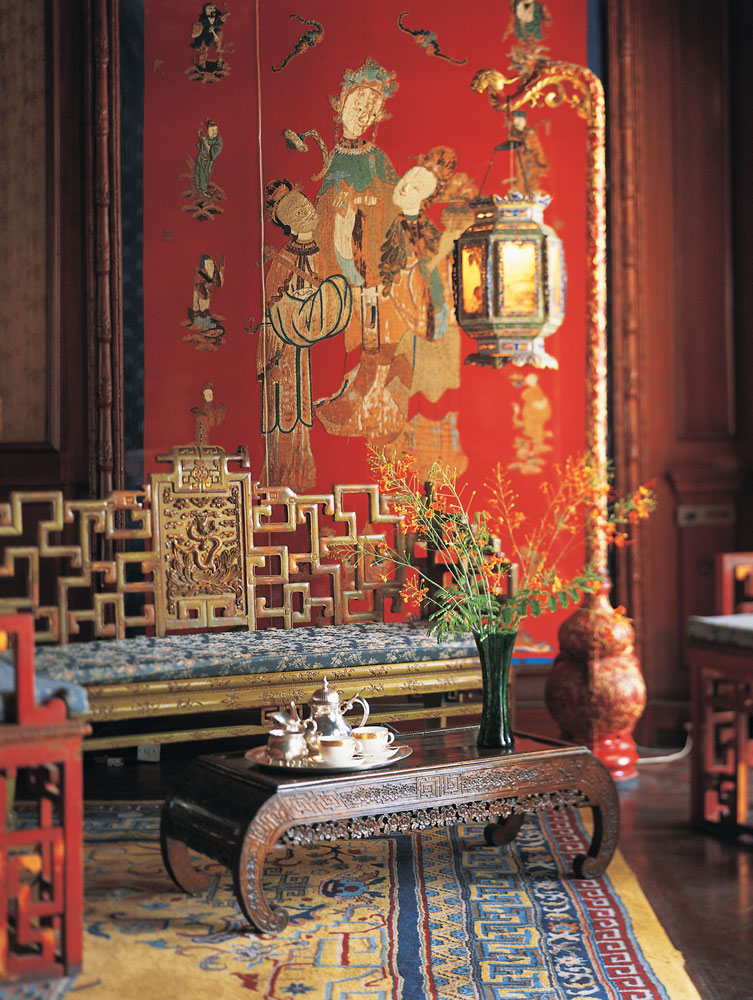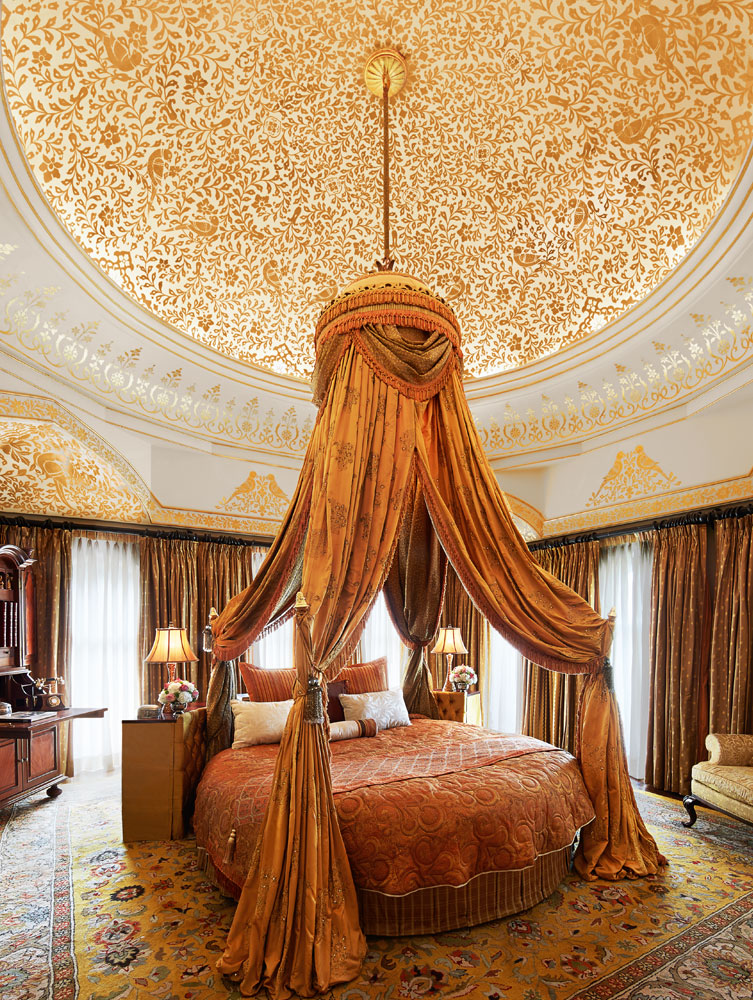November 2023 | 1353 words | 5-minute read
It was the summer of 1972. A private plane took off from Mumbai for Rajasthan with JRD Tata in the pilot’s seat. He and his sister, Rodabeh Sawhney, were en route to Jaipur for a historic signing. On May 2, 1972, in the presence of JRD, the management of the iconic Rambagh Palace, the residence of Jaipur royalty, was handed over to the Tatas.
“Half a century later,” says Puneet Chhatwal, Managing Director and Chief Executive Officer, Indian Hotels Company Ltd (IHCL), “it gives us immense joy and pride that Rambagh Palace, Jaipur has been ranked as the No 1 Hotel in the World by the Tripadvisor Travellers’ Choice Best of the Best List 2023. The list, based on reviews collected on Tripadvisor from users across the globe, puts Rambagh Palace right at the top of over 1.5 million hotels worldwide that were in the fray.”
From Rambagh Palace to a Taj palace
Rambagh Palace, the second palace to become a Taj palace, dates back to 1835. It started as a garden country house under Maharaja Sawai Ram Singh and evolved, as decades passed and kings changed, into a fairy tale palace.
The turn of the decade brought with it independence and a new era for India. The maharaja embraced the possibilities of this new era by converting Rambagh into India’s first luxury palace hotel. As more palaces followedhis lead, he became determined to not only preserve Rambagh’s legacy as the most sought-after royal experience but also show the world its full potential. The original structure was simple — just an enclosure and a four-room pavilion — and located far beyond the city walls, amidst sand dunes. It was inhabited by deer, antelopes, gazelles, wild boars, and the occasional tiger and panther straying from the neighbouring jungle.
By 1940 — when Maharaja Sawai Man Singh II married his third maharani, Princess Gayatri Devi of Cooch Behar — it had become a palace comparable to the most magnificent
It stood witness to multiple expansions and by 1925 had transformed into a home fit for a king. It became the royal palace of Maharaja Sawai Man Singh II, who further transformed Rambagh.
He expanded the structure and brought in the best from around the world to decorate it. Lalique fountains, European furniture, crystal, English bone china, Belgian cut glass, Italian marble statues and other trendy bric-a-brac were all imported. The Hammonds of London were called in to furnish the interiors. By 1940 — when Maharaja Sawai Man Singh II married his third maharani, Princess Gayatri Devi of Cooch Behar — it had become a palace comparable to the most magnificent.
The turn of the decade brought with it independence and a new era for India. The maharaja embraced the possibilities of this new era by converting Rambagh into India’s first luxury palace hotel. As more palaces followed his lead, he became determined to not only preserve Rambagh’s legacy as the most sought-after royal experience but also show the world its full potential.

“He looked at various options and toyed with the idea of tying up with one of the established hotel chains. After a couple of false starts he decided to approach his friend in Mumbai – JRD Tata,” notes the book Rambagh Palace Jaipur. “The Tatas were in the process of signing a similar agreement with Maharana Bhagwat Singh for Lake Palace, Udaipur. Adding Jaipur to their list was a bonus… Interestingly, not many people are aware that this was one of the rare instances of Mr JRD Tata being present at the signing of any contract.”
Custodians of living legacies
When the Taj took over the management of Rambagh in 1972, it also undertook the responsibility of reshaping the palace into a professionally run luxury hotel without disturbing its unique architecture and heritage. It was a step that would change the face of the hospitality industry in Rajasthan forever.

“In a pioneering effort five decades ago, IHCL undertook the care of this architectural marvel and its illustrious history, putting Rajasthan and its Rajput hospitality on the global tourism map,” Mr Chhatwal tells Tata Review.
Ms Sawhney, who had worked on the interiors of the Taj Mahal Palace, Mumbai, took a personal interest in the modernisation of Rambagh Palace. The alterations were overseen by her friend Maharani Gayatri Devi herself.
The palace had 104 rooms. Taj evaluated every room, and any room that did not meet its exacting standards was annexed to other rooms to make it fit for the discerning traveller. Rather than adding more rooms to increase inventory, Taj, in fact, reduced the number to 78 rooms, each with its distinct personality.
The changes that came with Taj seamlessly blended seemingly conflicting old-world charm and traditions with state-of-the-art technology and modern luxuries. “The veranda with arches, marble pillars and bevelled glass frames have given the lobby (once the nursery wing of the palace where the four children had their rooms) a feel of openness and provide a panoramic view of both the inner courtyards as well as the gardens in front,” says Rambagh Palace Jaipur. “Inside the lobby, traditional high ceilings with delicate leaf cornices and rare Spanish alabaster chandeliers add to its beauty. The use of marble pillars and arches has been so cleverly fused with the original look and theme of the palace that they merge beautifully and look almost a part of the original structure.”
Taj also recognised the role royalty played as patrons of arts and crafts in the region and took on the responsibility of nurturing cultural heritage, too. They commissioned local artisans for the recreation of original elements, ranging from aaraish, theekri work, organic colour paintings, restoration of old carpets and creation of pichwais to the brass work, stone carvings and furniture. Much like the building itself, it is difficult to separate the new from the old in the interiors as well.
Living like royalty
Over the years, Taj has taken care to ensure that every room has a uniquely opulent layout and décor so that no two rooms feel the same, but each offers the same standards of luxury.
The highlight rooms include the Suryavanshi Suite, a grand presidential suite that was originally part of the royal private chambers. The other grand presidential suite, Sukh Niwas, boasts arched stonework, rich textured drapes and fabrics, crystal chandeliers, gold leaf frescoes, opulent furniture and embellishments inside and spectacular views of the Aravalli hills outside.

Beyond the suites, which are considered among the most opulent living spaces in the world, are common spaces with rich stories of their own. The Rajput Room, the all-day restaurant, is part of the original structure way back when it was a lodge and still retains original elements. The Polo Bar, a nod to the eponymous princely sport, is also part of the original palace structure and one of the two rooms that flanked the central durbar room.
Rambagh is spread over 47 acres and one of the few Indian palace hotels with gardens on all sides. These ornamental gardens are a haven for birds, especially peacocks that roam free through them as they did way back when Rambagh was first established.
“As a brand with a storied legacy and one that is synonymous with authentic Indian hospitality,” says Mr Chhatwal, “it has been our constant endeavour to ensure that we create differentiated, yet nuanced experiences at our landmark hotels, grand palaces and idyllic resorts under the realm of Taj.”
Unbroken tradition of hospitality
Taj has maintained an unbroken tradition of hospitality and luxury at Rambagh Palace. While the palace has played host to statesmen, rockstars, writers and celebrities of all ilk, every guest within its walls lives like a king. And the feeling of being transported back in time begins from the moment one enters the gates.
“Reinventing traditions and curating signature experiences rooted in the local culture is the ethos of the brand,” says Ashok Rathore, Area Director of Rajasthan and General Manager – Rambagh Palace, Jaipur. “Rambagh Palace offers unique experiences, authentic royal culinary recipes, historic experiences like a restaurant recreated inside a steam engine, and royal wellness rituals that recreate a bygone era. These have been perfected over the years to ensure that the palace remains the most sought-after destination not just in India but around the world.”
He adds, “With the Living Legacies of the Taj — our fabled palaces — we’ve reimagined royal living through culture, cuisine, celebrations, craft and more. From Jaipur to Udaipur with Taj Lake Palace, to the imposing Umaid Bhawan Palace in Jodhpur and the soon to be opened Gorbandh Palace in Jaisalmer, Taj offers the flavour of the rich heritage of our country to the global traveller.”
- Monali Sarkar and Kermin Bhot





















